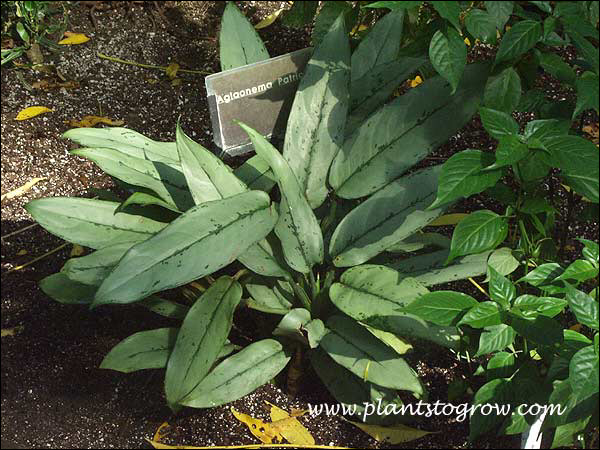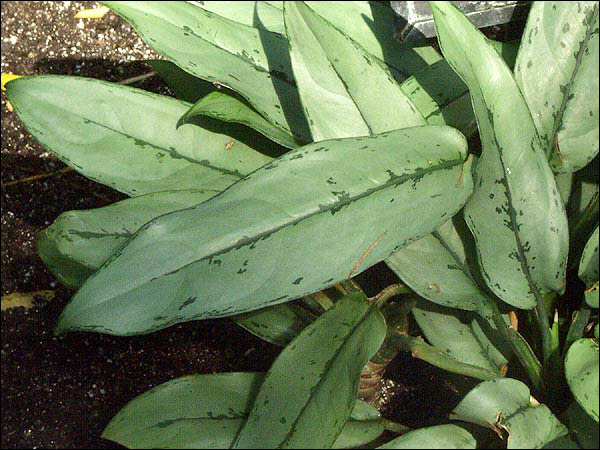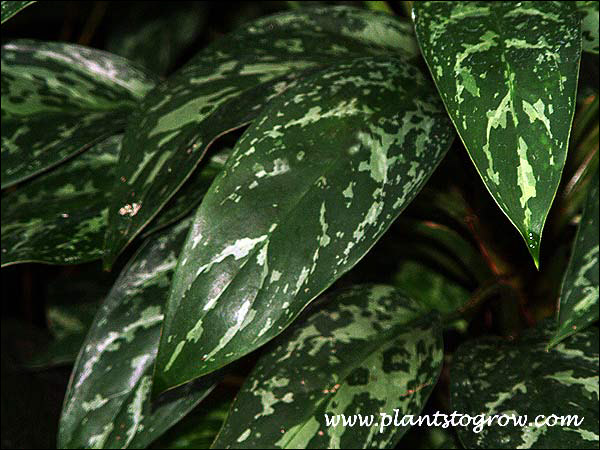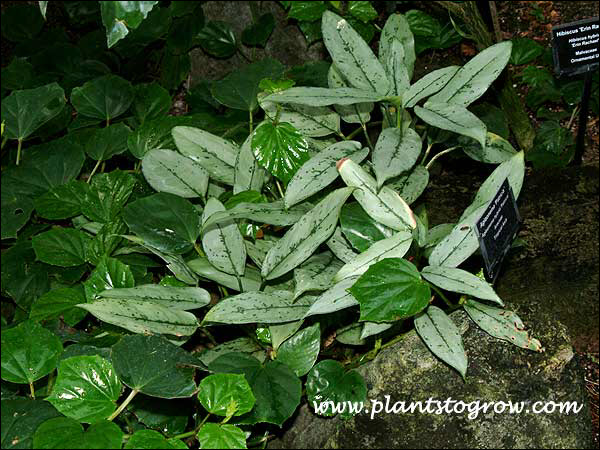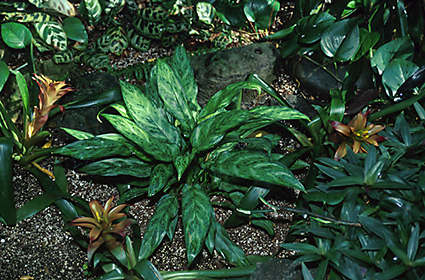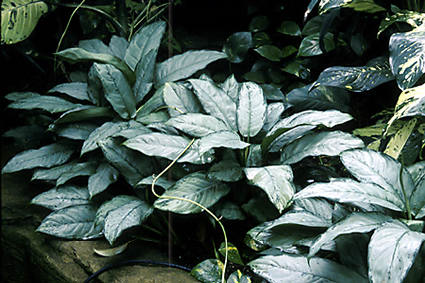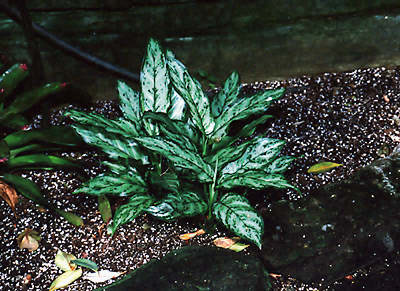| Description | Chinese Evergreen ABC's (Aglaonema) An easy to grow plant for the interior of buildings. Can have some toxicity problems, especially to gazing pets. |
|---|---|
| Pronunciation | (ag-lay-oh-Nee-mah) |
| Plant Type | Indoor Foliage, Perennial Tender, Site author's observations, Tropical herbaceous plants |
| Sunlight | tolerates most light conditions except full sun, prefers bright to moderate but can exist in the low light areas |
| Moisture | average |
| Growing Media | average house, |
| Temperature | prefers average house, doesn't like below 55 degrees F. |
| Flowers | creamy-white to slightly greenish spathes, not very ornamental unless you are a botanist. |
| Leaves | color of leaves depends on the cultivar, usually green with white, cream, silvery-white variegation, newer cultivars have pinks and reds |
| Stems | cane-like stems |
| Dimensions | 18-24 by 18-24 inches (HS) size will vary with cultivar or species, grown as a landscape plant in warmer zones probably larger |
| Maintenance | With age, they can lose their bottom leaves and look like"bare legs". Just cut back and they will branch and regrow |
| Propagation | Easy to root from stem section cuttings and tip cuttings. Older plants can be divided. To do stem section cuttings, cut a six inch piece of stem and insert into a rooting media. Make sure that the stem is oriented properly. If I do a lot of the cane cuttings I use a marker to mark which is bottom and which is top. |
| Native Site | Areas of Asia, Philippines, Borneo, Indonesia, Thailand, and China. |
| Misc Facts | Aglaonema is derived from, the Greek words aglos (bright) and nema (thread). AKA: Painted Drop Tongue, Green Lady, Poison Dart Plant, Philippine Evergreen Toxicity: All parts of the plant contain calcium oxalate crystals, an irritant to the mouth and esophagus. Toxic to cats and dogs. |
| Author's Notes | I have found these to be one of the toughest plants for indoor displays. We had these all over the school when I was teaching horticulture. |
| Notes & Reference | #158-Plantepedia (Maggie Stuckey) |

Cart
